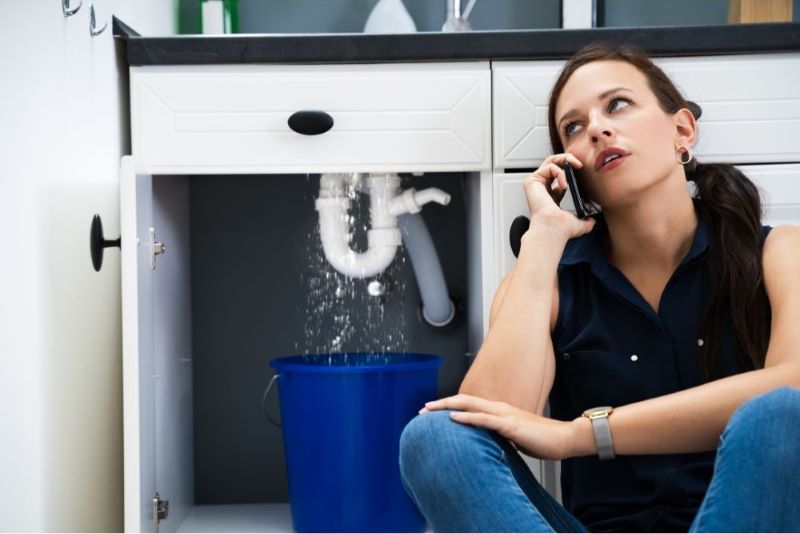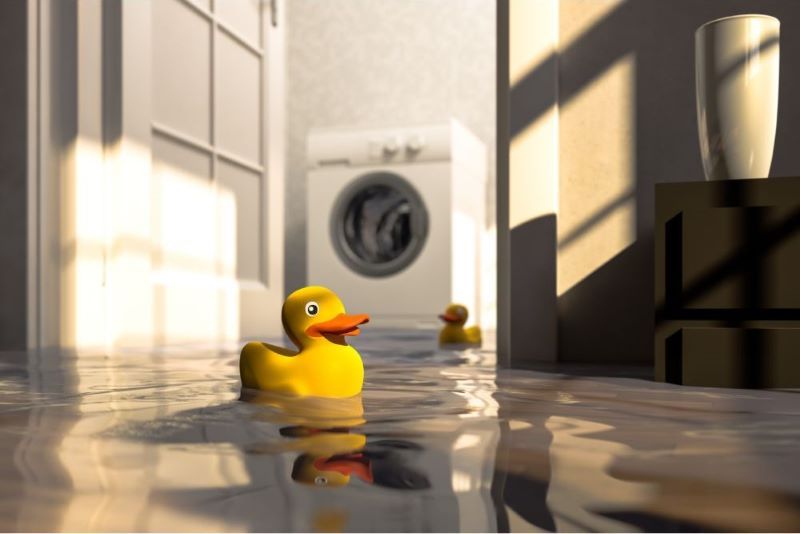Water damage is a serious problem. You will ask yourself “How Much Water Does It Take To Cause Water Damage”? Your property can be destroyed by water damage quicker than you can imagine. A leak or flood can result in the growth of mould, damage to walls, flooring, and electrical components, as well as structural problems, within the first twenty-four (24) hours. You should get in touch with a water damage restoration company right away for advice and repairs if you see any signs of water damage or have any questions.
What are the Causes of Water Damage?
Water damage can result from a wide range of problems, some of which occur suddenly and others gradually. The following is a list of the most usual causes of water damage:
- All kinds of leaks
- Any type of flooding
- Clogged gutters
- Defected appliances
- Sewage backup
- Weather-related problems
How Much Water Does It Take to Cause Water Damage?
Sadly, even a tiny bit of water could damage your property severely and extensively. When moisture seeps into your building’s structure, a series of damaging events start to occur.

Although it is impossible to foresee or prevent every possible hazard, the best course of action is to address the problems right once and start working to repair the damage.
Six (6) to Eight (8) Hours
Water damage will start if there’s standing water somewhere for longer than a few hours. There will be very little or no damage within the first 6 to 8 hours. The first 6-8 hours matter most for cost-effective repair. Most areas only need to be cleaned and sanitized, and the structure won’t require extensive repairs. If a leak is the main source of the damage, professional plumbers can fix or replace the pipe, restoring it to its original state.
Twenty-Four (24) Hours
Twenty-four hours is more than enough time to produce a significant amount of water, even if the leak is tiny. The water damage can get so bad that the ceiling, walls, or slabs begin to crumble. But there isn’t that much water damage. For immediate assistance, you have to contact water damage repair services right away. Another option is to start removing extra water with a mop and bucket. It is also very important to check the sump pump.
You must take all reasonable steps to lessen the water damage until assistance arrives to be provided.
Twenty-Four (24) to Seventy-Two (72) Hours
You would see the mould growing quickly. But things will get worse with the structural parts. Above all, there will be a noticeable increase in the leakage. Your property will smell strongly of something. Due to a notable rise in microbial activity on your property, allergies and cough issues may also arise. Perhaps the walls will begin to peel off as well. If at all possible, inform your insurance provider about the condition. Your claims may be denied if you don’t inform them.
After Three (3) Days
The property’s condition will start to seriously deteriorate after three days. Reversing everything to its pre-damage form becomes extremely difficult. But you still have time to do something about it.
First things first, remove the standing water and dry everything. For short-term sanitization, you can use an alcohol-water solution; but, after three days, we do not advise attempting any DIYs. This may not only worsen the situation but also lead to the loss of warranties and insurance.
After Seven (7) Days
There will be a noticeable mould growth and a more strong odour. After seven days, anyone can begin to feel sick. Your health may be at risk if there is a lot of black water and black mould. Certain damages can be irreparable. Damages that are irreparable and non-salvageable must be completely replaced.
For excellent service, you can work with professional plumbers who specialize in replacement, repair, and restoration. The longer you ignore the water damage, the higher the expenses will be.
Past Seven (7) Days
The amount of time, money, and effort required for any restoration work will greatly rise if you ignore water damage for longer than a week. Mold spreads much more quickly now, and there’s a higher chance of structural damage.
Some Tips for Dealing with Water Damage
If you notice leakage and water damage, you should first deal with it. The following tips can help you deal with water damage:

- As quickly as possible, get in touch with your insurance provider, and be truthful about the amount of the water damage and its primary cause.
- Collect any valuables that are easily reachable and try to stop the leak by addressing the source of the water damage.
- If the breaker box is in a dry area of the property, only then should you turn it off. If there is any possibility of water damage near the breaker box, stay away from it to prevent electric shock. Call the utility company and request that they turn it off. Ask them to send someone out if that isn’t possible.
- Make a quick call to a professional water damage restoration service to get the repairs started. Before repairs start, they tend to work together with your insurance provider to make sure they have all the necessary paperwork.
- Take kids and pets out of the property, especially if there is significant water damage.
- To stop more leaks, turn off your water at the water main if you discover a plumbing leak stemming from a busted pipe or plumbing fixture. To prevent shock, turn off your breaker box first if the water meter is situated beyond any standing water. This phase should be skipped if the breaker box is not located in a dry area.
- Wait for professionals to arrive before handling any water damage caused by a backed-up sewer or by grey or black water, as there is a significant risk of biohazard.
Ways to Prevent Water Damage to the Property
Although it is impossible to plan for natural disasters, there are steps you can take to lessen the likelihood that your property will sustain some water damage.

- Buy a sump pump
- Check and repair your chimney
- Make your crawl space or basement waterproof
- Make your gutters clean
- Request a roof assessment
- Seal all cracks with caulk


